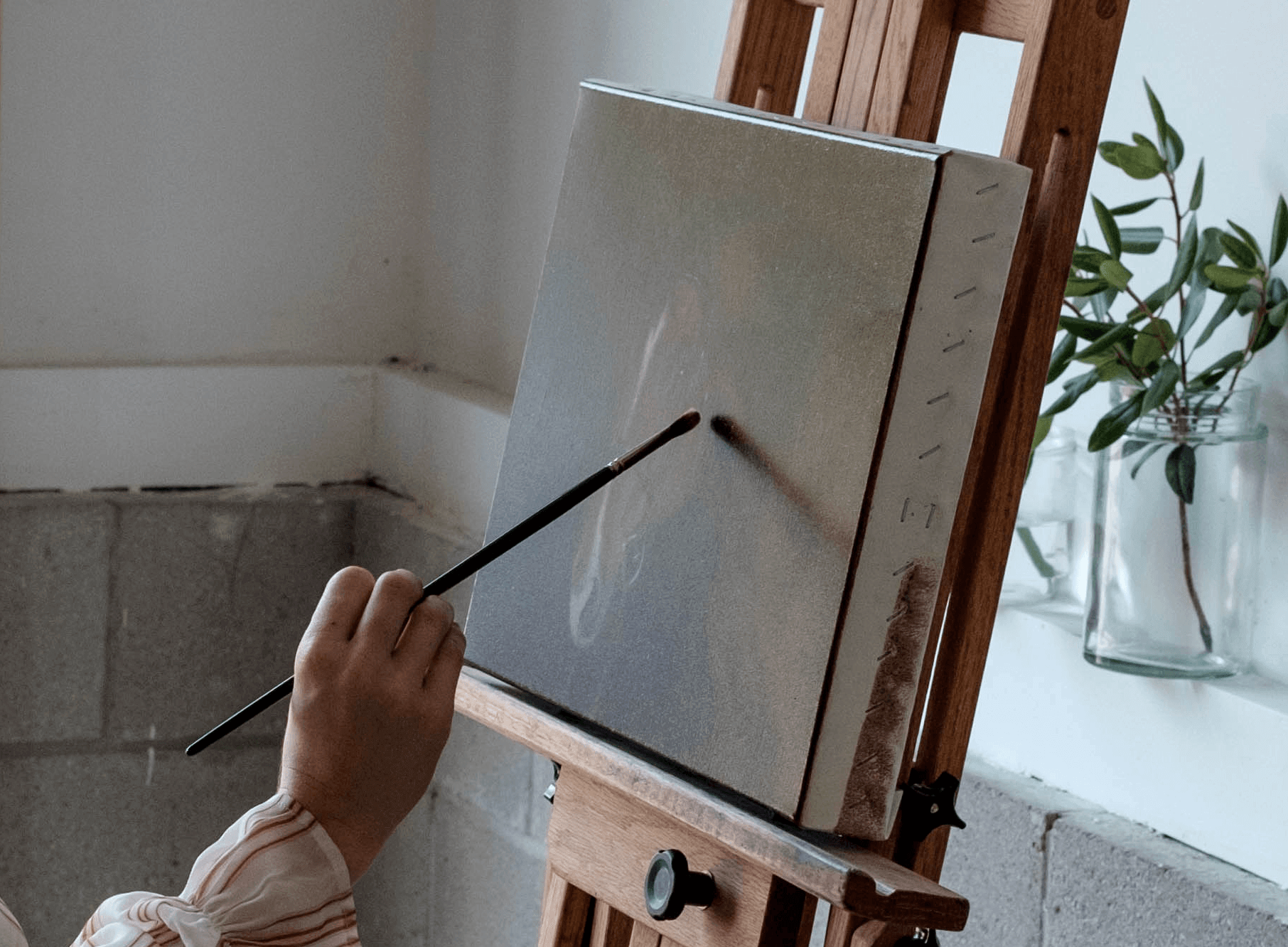
Finding out what substrate to paint on can be daunting, but with some knowledge, any artist can make informed choices. Photo by Piper Talladay
More...
Knowing what the best surface for oil paints to use is one of the biggest questions asked by students.
There are many different types of surfaces we can paint on, from canvas to glass. Because of the wide variety of materials available, it can be difficult to know if the surface you've chosen is a suitable and lasting oil painting surface.
Oil paint done directly onto most surfaces will eventually rot the surface, so it is essential to prime your oil painting surface before you begin. Primer protects the substrate, whether canvas, board, wood, an illustration board, from the corrosive effects of oil paint.
But if you have a good primer or gesso, you can use a vast array of different oil painting surfaces for your work. Here are a few of our recommendations!
Oil Painting Surface #1: Panel
Wood, or panel, is one of the oldest oil painting surfaces. The Old Masters painted on primed pieces of wood to create some of the oldest masterpieces in art history. Older pieces of wood and panel are quality substrates when properly prepared.

This Evolve painting by Sheila J. is done on a linen canvas, which can then be glued with archival glue to a wood board.
The best surface for oil paints to work on regarding panels is arguably is an old piece of furniture or an old piece of wood, that has had a chance to acclimate itself to all kinds of environmental contamination, humidity, or pollution. So if you take an old headboard, and cut and sand it down, you will have an incredible substrate to work on.
Wood that has been exposed to elements for thirty to fifty years and has not split in any way will most likely last forever. And vintage dressers or older furniture can be a great source of that substrate.
Oil Painting Surface #2: Linen or Canvas
While earliest artists worked on wood panels, they soon discovered its limitations. How large a piece of wood they could find determined the size of painting they could produce. So artists began to paint on the cloth sails from ships and were no longer limited in size. From here, we have linen and canvas. Traditionally, you're going to find that the top two oil painting surfaces are canvas and linen.
Canvas vs Linen
Though most think of canvas and linen and one and the same, they are actually quite different. At first glance, most are a fairly thin woven material, something like denim, but much thinner, and stretched taut over canvas stretchers.
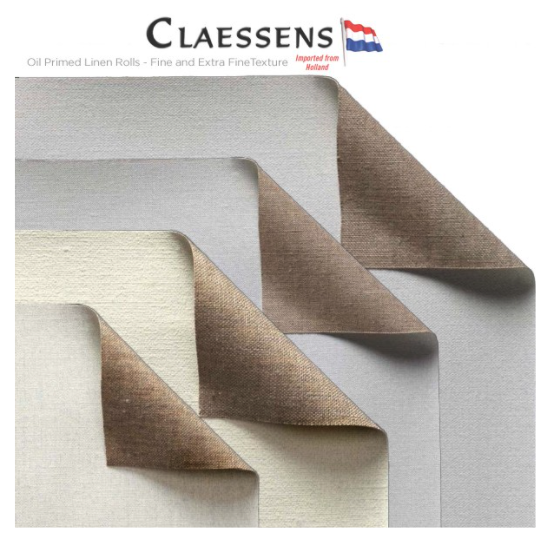
Example of different types of linen from Claessen's Fine Linen.
After those similarities, canvas and linen are quite different. Canvas is made out of cotton and therefore quite affordable, but it has a short life span, and within 50 years it can begin to rot and degrade.
Now art historians can clean and restore rotted canvas by mounting new canvas behind it, but it does have a short lifespan.
Linen is made from the fibers of the flax plant and is very laborious to manufacture, hence a higher cost, but the fiber is very strong and lasting, with a lifespan closer to 200 years.
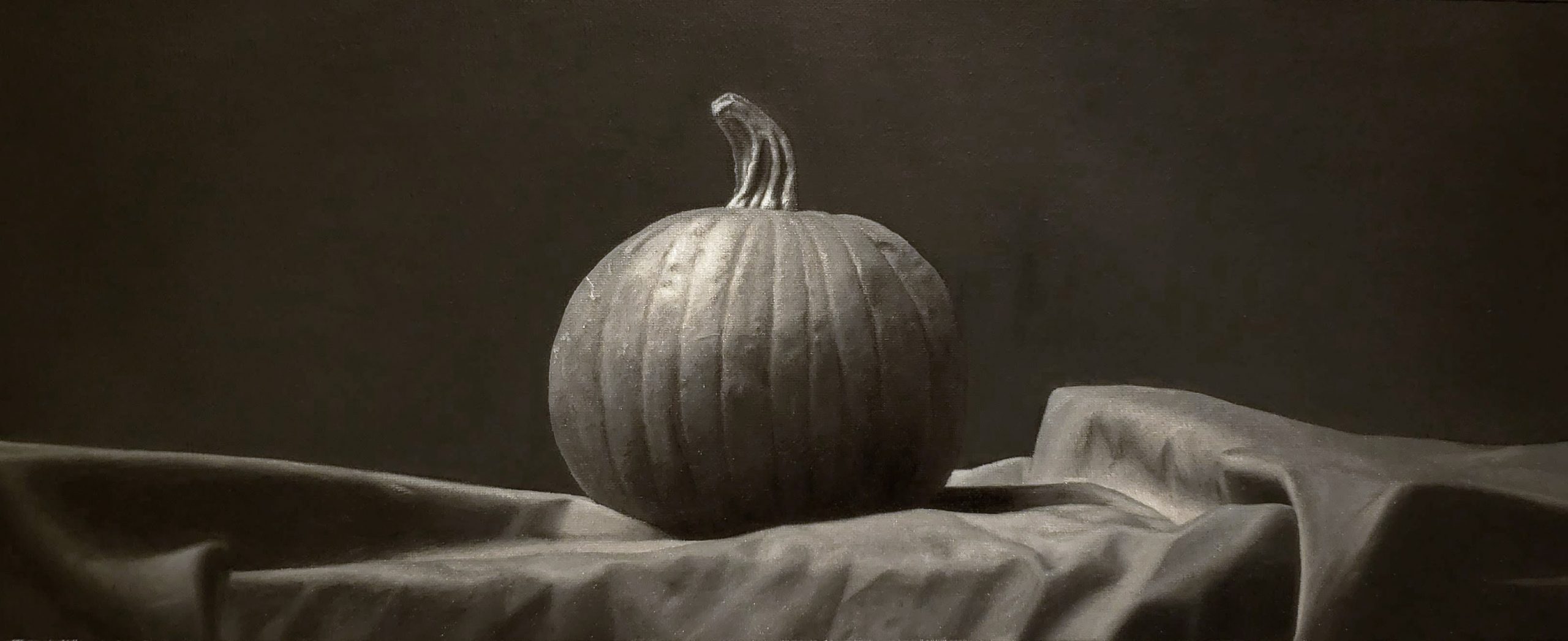
A painting on a cotton canvas done by Evolve student Sheila J.
As far as a painting surface, linen tends to be a bit more organic in its look. Linen surfaces aren't perfectly smooth and exact. Instead, they have little knots and imperfections that give the paintings a natural feel.
Cotton tends to be more machine-like in its appearance, identical from corner to corner over even a 100-yard span, where linen has little differences every inch.
So if you're looking for something a little more high end, something that has a little bit of its own personal fingerprint, linen is beautiful, but you must pay for it. If you prefer a more mechanical and consistent look, cotton provides that, but has a shorter life span and lacks a unique feel.
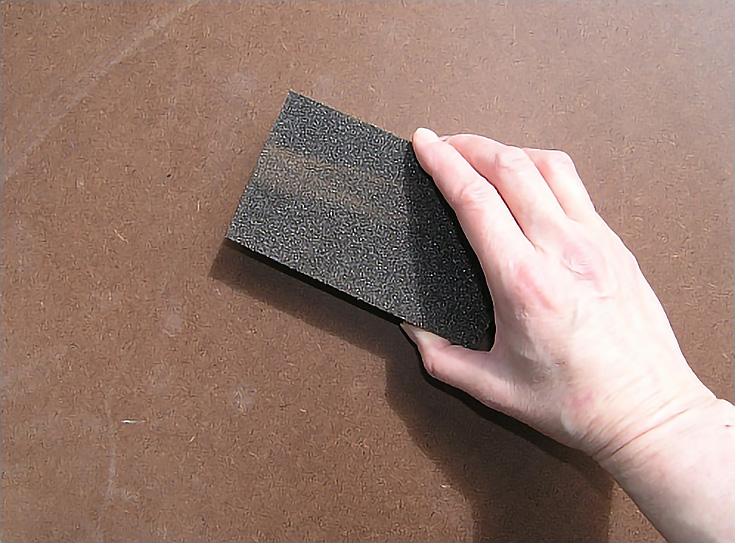
Masonite can be found at local hardware stores or readily prepared by art stores. Read more about preparing masonite here.
Oil Painting Surface #3: Painting on Masonite
Another great oil painting surface to work on is masonite. Most people don't know what masonite is, but this substrate is one of the most affordable, easily sourced materials for painting and many artists prefer this to be the best surface for oil paints.
Masonite is a medium density fiberboard or hardboard, often used to make things like clipboards and the like. It is simply wood pulp that is ground up into very fine pieces, and then through a heating process is turned into a partial liquid.
Then the pulp runs through very heavy steel wheels. After that the mill flattens and cools the pulp. Once it cools, the wood pulp binds together through the natural resin in the wood to become a solid panel.
The lack of glue or binders results in a very pure wood substrate. Some masonite has a kind of glossy surface on one side, which is simply the addition of a bit of oil to smooth out one side.
Once primed properly, the masonite provides a smooth, elegant oil painting surface. The priming process doesn't allow any humidity to access the substrate. A masonite painting can last well over 100 years when primed correctly.
Masonite and hardboard are very affordable. You can find them in nearly any hardware or lumber store. Art companies also make acid free pH balanced versions of masonite. The panel company Ampersand makes pH balanced panels primed for artists' use.
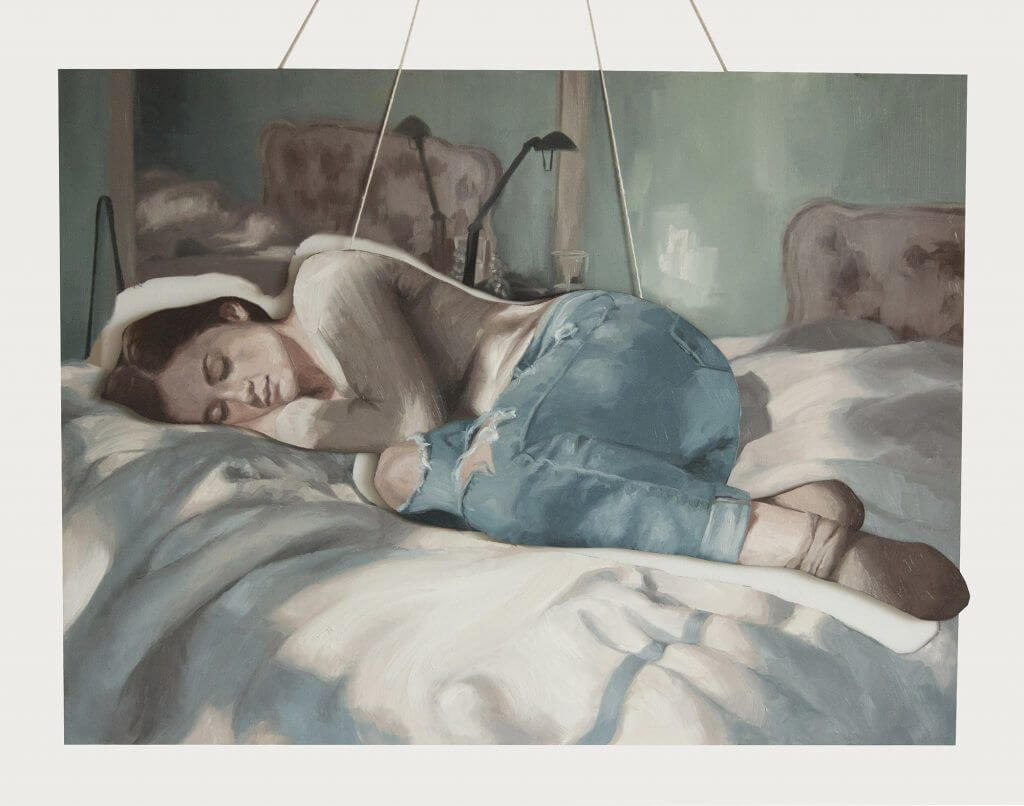
Evolve Instructor Abbie Rugg paints on a unique surface, like plexiglass, in her three-dimensional work. Ioli, 2017 .
Unique Substrates for Oil Painting
There are a million other things being produced as surfaces for oil painting. You can prime aluminum panels, glass, plexiglass, and many other materials for painting.
Arguably, the best surface for oil paints to work on is actually copper, large copper sheets. Thought wildly expensive, copper doesn’t ever expand or contract, it’s impervious to the elements, it doesn’t rust or yield to humidity, and is quite durable.
It would need to be scored and scratched up then carefully primed but makes a very lasting substrate for paintings.

These Strathmore Illustration Boards are a great choice for an oil painting surface.
Beyond that, illustration board is one of the easiest substrates to work with. It is very limited in size because it cannot be made on a large scale, but is a primed, smooth surface for painting.
There are two types, cold press and hot press illustration board. Hot press is very slick and similar to painting on glass, but cold press illustration board has a bit of a tooth to catch your brush as you work.
You can mount it on wood for a bit more stability but is acid-free and a perfect pH balance, made of fibers like cotton. It is also available and affordable in most art stores.
Final Thoughts on the Best Surface for Oil Paints
Choosing the best surface for oil paints is really a personal choice - what works best for you, what is within your budget, and how long you want your piece to last.
You can choose from many oil painting surfaces as an artist. Regardless of the surface chosen, properly priming before you begin to paint is crucial and understanding what you are working on is also important.
Simply walking into a store and buying stretched canvas without any knowledge is dangerous. Often store stretched canvas is too loosely stretched and your painting will suffer from the first brush stroke that hits the loose canvas. Canvas or linen, if that is what you choose to use, should be rigid and tight, stretched properly.
So before you begin to paint, consider what will be holding up your painting for years to come, and choose your oil painting surface wisely.
Comment below with your favorite and best surface for oil paints you enjoy using!
FREE MASTERCLASS:
The 4 Part Framework to Develop Artistic Excellence in 12 Months
